Timbuktu is located in the Saharan Desert in the West African nation of Mali. The city has a long and rich history, dating back to the 5th century when the Tuareg people founded it. Timbuktu was an important center of trade and learning during the height of the Mali Empire in the 13th and 14th centuries.
Unfortunately, the city was conquered by the Songhai people and experienced a decline in the 15th century. But it wasn’t sad for long after all. Timbuktu regained its importance during the Songhai Empire‘s golden age in the 16th century. However, the city was once again crumbling when the French conquered it in the 19th century.
Today, Timbuktu is a UNESCO World Heritage site and a symbol of African culture and history. We will look at the city’s long and fascinating history, especially how it thrived during Islam’s golden age.
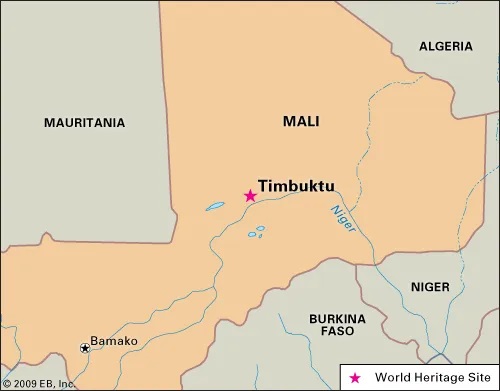
Early History of Timbuktu
Timbuktu is a city in modern-day Mali, West Africa, close to the Niger River. Iron Age tumuli, megaliths, and the remnants of long-abandoned settlements prove that the region surrounding Timbuktu has been populated since the Neolithic era. Beginning at least 3,500 years ago, the Niger River frequently flooded the plains between Timbuktu and Segu in the southwest. This created a rich territory for farming. Local copper deposits were mined, along with the cultivation of red-skinned African rice and other native cereals and delicacies.
During the first millennium CE, copper was traded via trans-Saharan routes. But the earliest signs of copper ingots being made for trade are found after the 11th century CE. Similar to silver, gold was probably mined nearby and traded, but there isn’t much historical proof.
The Tuareg ranchers of the southern Sahara built Timbuktu circa 1100 CE. They felt it was a strategic location where river and land routes intersected. According to one account, the herdsmen dug a well and asked an elderly woman named Buktu to take care of it. Timbuktu stems from the name the Tuaregs gave the location, Tin’Buktu, which means “place of Buktu.”
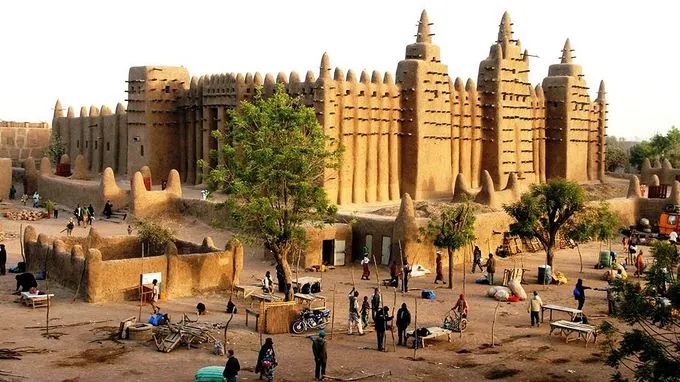
Tin is the word for “place” in the Tamashek language of the Tuareg people. The city’s name simply means “the place between dunes,” – a more straightforward but less romantic explanation of its origin. Timbuktu would grow from its modest Tuareg beginnings to become a significant independent port in the desert.
Timbuktu During Mansa Musa’s Reign
Under Mansa Musa I, and his successors, Timbuktu developed from a modest but prosperous trading port into a hub of trade and learning. It made the Mali empire one of the most significant of the Golden Age of Islam. Strong Islamic and West African rulers came to Timbuktu to trade, learn, and forge powerful political alliances.
Read: Mansa Musa: The Downfall of the Richest Man in History
Timbuktu had between 150 and 180 Maktabs, often known as Qur’anic schools, by the 16th century. Large mosques were also constructed by the monarchs of Mali. They weren’t just for religious purposes but also as institutions for studying mathematics, law, grammar, history, geography, astronomy, and astrology.
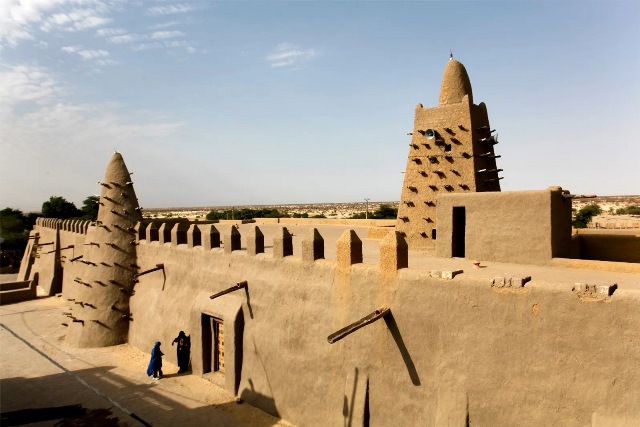
Mosques started to be constructed all over the Mali Empire under the reign of Mansa Musa I (1312–1337 CE). The eminent architect Ishak al-Tuedjin, who had been lured from Cairo after Mansa Musa’s visit there, designed a sizable mosque at Timbuktu, the “big mosque,” also known as Djinguereber or Jingereber.
By 1330 CE, the mosque had been finished. Even though Timbuktu wasn’t the capital, the city also had a royal palace called a Madugu that is now lost. Musa appointed a regional governor to supervise the city, who was in charge of administering justice to the roughly 15,000 residents, collecting trade taxes, and resolving any tribe disputes.
Islamic Studies in Timbuktu
Timbuktu had a number of institutions where books were gathered in enormous libraries, and students were instructed first to memorize texts before producing commentary and creative works based on Islamic religious scriptures for higher-level students. Islamic learning was also emphasized in this city for every level of education.
The saint Sharif Sidi Yahya al-Tadilsi, who died in 1464 CE, was a renowned scholar and the patron saint of the town. Perhaps it is crucial to remember that religious studies were more extensive than we might think today, with traditional Islamic “humanities” disciplines covering not only theology but also traditions, law, language, rhetoric, logic, history, geography, astronomy, and astrology. Another area of focus was medicine, which helped the city become well-known for its medical professionals.
Despite the emphasis on Islamic studies and the building of mosques, traditional indigenous beliefs were still practiced separately from Islam. And even the version of Islam that became dominant in Mali was a regional variety of the religion practiced elsewhere. Particularly in Timbuktu, a clerical class rose to prominence, with many of its members being of Sudanese descent.
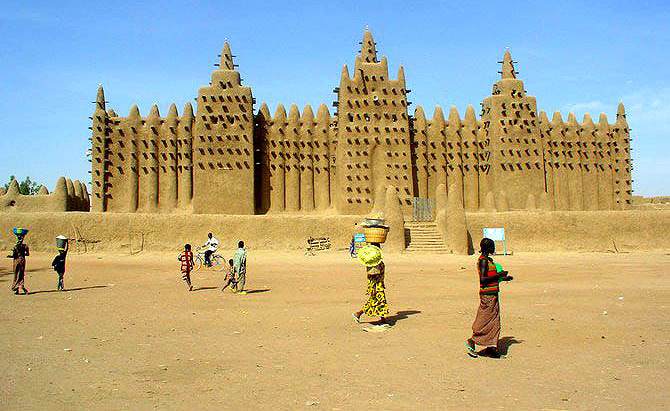
These clerics, local converts, and academics frequently served as missionaries. They brought Islam to other regions of West Africa and changed perceptions of it from one of the white outsiders to one largely associated with black Africans.
Timbuktu became the holiest city in the Sudan region thanks to its three mosques, clerical school, and universities. However, it’s also true that the impact on the education of the larger Mali population was little. This was because religion and other courses were not taken in native languages. And they were also only open to a select urban elite.
Timbuktu Books and Oral Histories
It is not unexpected that books were valued items in Timbuktu and were handed down through the generations. The practice is similar to the West African tradition of griots, revered musicians, and storytellers who were the caretakers of the history of the empires and royal families who passed down oral histories.
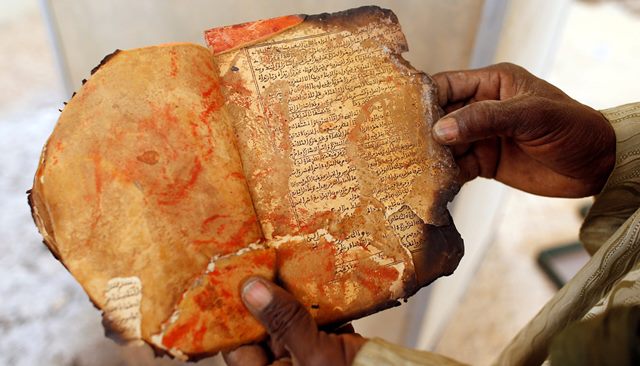
The Mandinka ethnic group from which Sundiata descended was the source of the griots who wrote his epic. In Timbuktu, the profession of a griot was only passed down through the family. It was only learned through a lengthy apprenticeship, much like Islamic study and bookmaking. Toumani Diabaté, a Malian musician who plays the kora and has griot ancestry dating back to the Golden Age of Islam, is one of the griots who still perform today.
We Design & Develop Websites, Android & iOS Apps
Looking to transform your digital presence? We specialize in creating stunning websites and powerful mobile apps for Android and iOS. Let us bring your vision to life with innovative, tailored solutions!
Get Started TodayThe Arrival of the European Explorers
Since Leo Africanus’s narrative in the first half of the 16th century, there have been historical accounts of the city. These accounts have inspired numerous European people and organizations to undertake significant attempts to find Timbuktu and its riches. The African Association was established in 1788 by a group of named Englishmen. And they did this with the objective of locating the city and determining the Niger River’s route.
Young Scottish explorer Mungo Park was the first of their funded explorers. And he launched two expeditions to look for the Niger River and Timbuktu (first in 1795 and then in 1805). Although the first Westerner to enter the city is thought to have been Mungo Park, he passed away in present-day Nigeria before he could share his discoveries.
Different Accounts of the First Westerner to Visit Timbuktu
The Société de Géographie, located in Paris, offered a 9,000 franc reward in 1824 for the first non-Muslim to arrive in the town and bring back information on it. Gordon Laing, a Scotsman, arrived in August 1826. But, local Muslims who were wary of European intrusion assassinated him the following month. The Frenchman René Caillié successfully claimed the prize. He arrived in 1828 while traveling alone and posing as a Muslim.
On the other hand, while he was a slave for many years in Northern Africa, the American sailor Robert Adams claimed to have traveled to Timbuktu in 1812. He offered an account of his experience after being rescued by the British consul in Tangier and traveling to Europe. This possibly makes him the first Westerner to have reached the city and returned to tell about it in hundreds of years. But his account wasn’t fully accepted as it instantly sparked debate.
While some historians have defended Adams’ narrative, more recent research has concluded that – even though Adams was almost certainly in Northern Africa, it is doubtful that he ever visited Timbuktu. This was due to the inconsistencies in his description of the city. Before 1890, three more Europeans arrived in the city. They were Heinrich Barth in 1853, Oskar Lenz from Germany, and Cristobal Benitez from Spain in 1880.
Islam’s Golden Age in Timbuktu
Conclusively, the city of Timbuktu thrived during Islam’s Golden Age for a number of reasons. The city was located at the crossroads of major trade routes, and its strategic location allowed it to prosper. Additionally, the city’s rulers encouraged religious and cultural tolerance, which made Timbuktu a center of learning and a cosmopolitan city. But unfortunately, the city’s decline began when the French arrived in West Africa, and many of the city’s cultural products were looted and taken back to Europe. In addition, militants connected to al Qaeda in the Islamic Maghreb took control of Northern Mali in 2012 and started destroying anything believed as “haram” to their religious practices. This included generations of manuscripts from the ancient city of Timbuktu. Hence, they destroyed hundreds of years of legacy.
Before you go…
Hey, thank you for reading this blog to the end. I hope it was helpful. Let me tell you a little bit about Nicholas Idoko Technologies. We help businesses and companies build an online presence by developing web, mobile, desktop, and blockchain applications.
As a company, we work with your budget in developing your ideas and projects beautifully and elegantly as well as participate in the growth of your business. We do a lot of freelance work in various sectors, such as blockchain, booking, e-commerce, education, online games, voting, and payments. Our ability to provide the needed resources to help clients develop their software packages for their targeted audience on schedule is unmatched.
Be sure to contact us if you need our services! We are readily available.
Put Your Tech Company on the Map!
Get featured on Nicholas Idoko’s Blog for just $200. Showcase your business, boost credibility, and reach a growing audience eager for tech solutions.
Publish Now










